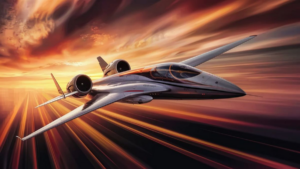When it comes to the marvels of modern engineering, few things captivate the imagination quite like the world’s largest aircraft. These colossal machines represent the pinnacle of human achievement in aerospace technology, pushing the boundaries of what was once thought possible. In this article, we delve into the realm of giants in the sky, exploring the question: What is the largest aircraft in the world?
The Race for Size: A Brief History
The quest to build ever-larger aircraft has been a long-standing endeavor in aviation history. From the early days of aviation pioneers to the present, engineers and designers have continuously pushed the limits to create massive flying machines capable of carrying unprecedented payloads.
Notable Milestones
Throughout history, several aircraft have held the title of the largest in the world, each surpassing its predecessors in size and capability. These milestones include iconic aircraft such as the Hughes H-4 Hercules, famously known as the “Spruce Goose,” and the Antonov An-225 Mriya.
The Current Champion: Antonov An-225 Mriya
As of the present day, the Antonov An-225 Mriya stands as the undisputed champion of the skies in terms of size. Designed by the Soviet Union’s Antonov Design Bureau in the 1980s, this massive cargo aircraft was built to transport heavy and oversized payloads with unparalleled efficiency.
Dimensions and Capacity
The Antonov An-225 Mriya boasts impressive dimensions, with a length of 84 meters (275 feet) and a wingspan of 88.4 meters (290 feet). Its maximum takeoff weight exceeds 640 metric tons, making it capable of carrying outsized cargo that few other aircraft can handle.
Applications and Capabilities
While originally conceived for military purposes, the Antonov An-225 Mriya has found widespread use in civilian applications, particularly in the transportation of oversized cargo such as machinery, equipment, and even other aircraft components.
Notable Operations
Over the years, the An-225 has been involved in numerous high-profile operations, including transporting aid supplies to disaster-stricken regions, delivering equipment for space exploration missions, and facilitating the movement of large industrial components for infrastructure projects.
Future Prospects: Beyond the An-225
Despite its impressive capabilities, the Antonov An-225 Mriya remains a singular marvel in the world of aviation. However, ongoing advancements in aerospace technology promise to usher in a new era of even larger and more capable aircraft in the years to come.
Emerging Technologies
From innovative materials and propulsion systems to revolutionary design concepts, the future of aviation holds boundless possibilities for the development of larger and more efficient aircraft. Whether for commercial transport, military operations, or humanitarian missions, the quest for ever-larger aircraft continues to drive innovation and exploration in the aerospace industry.
In conclusion, the Antonov An-225 Mriya stands as the largest aircraft in the world, representing the pinnacle of human ingenuity and engineering prowess. With its remarkable size and capabilities, it continues to inspire awe and fascination among aviation enthusiasts and industry professionals alike. As we look to the future, the quest for larger aircraft remains an ongoing journey, fueled by the relentless pursuit of innovation and excellence.
equently Asked Questions
Here are some common questions about the largest aircraft in the world:
- What are the key features of the Antonov An-225 Mriya?
- How does the Antonov An-225 Mriya compare to other large aircraft throughout history?
- What are some notable operations involving the Antonov An-225 Mriya?
- What is the potential future of large aircraft beyond the Antonov An-225 Mriya?
Comparative Analysis: Antonov An-225 Mriya vs. Other Large Aircraft
While the Antonov An-225 Mriya holds the title of the largest aircraft in the world, it’s interesting to compare it to other large aircraft throughout history. Here’s a comparison table:
| Aircraft | Length | Wingspan | Maximum Takeoff Weight |
|---|---|---|---|
| Antonov An-225 Mriya | 84 meters (275 feet) | 88.4 meters (290 feet) | Exceeds 640 metric tons |
| Hughes H-4 Hercules (“Spruce Goose”) | 66.65 meters (218 feet) | 97.54 meters (320 feet) | 180 metric tons |
| Airbus A380 | 72.72 meters (238.5 feet) | 79.75 meters (261.6 feet) | 1.235 million pounds (560 metric tons) |
Comparative Insights
From the comparison, it’s evident that while the Antonov An-225 Mriya boasts impressive dimensions and payload capacity, other aircraft such as the Airbus A380 and the historic Hughes H-4 Hercules (“Spruce Goose”) also hold significant records in different aspects of size and capability.
See also:






